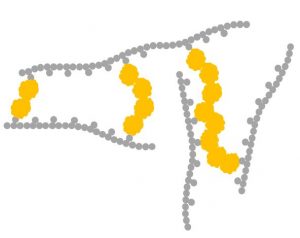Mechanical behavior of all-lignocellulose composites
In this study, we investigated property differences and failure mechanisms of hot-pressed, binder-free wood fiber composites. Random-in-plane microfibrillated lignocellulose (MFLC) composites showed better mechanical properties than microscale wood fibers WF due to stronger strain-hardening from lower porosity and better interfibrillar adhesion, provided by the intrinsic lignin-hemicellulose binder. Axially oriented wood fiber composites (O-WF) reached comparable […]
Mechanical behavior of all-lignocellulose composites Läs mer »


